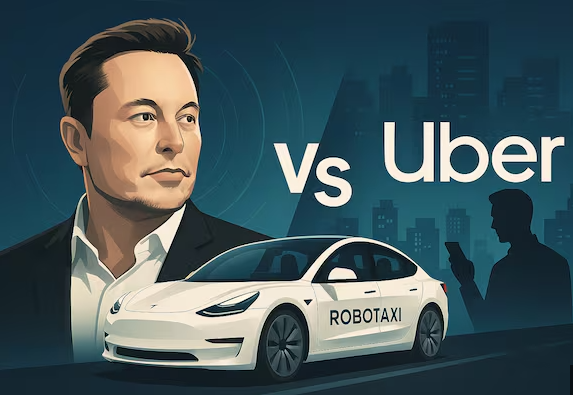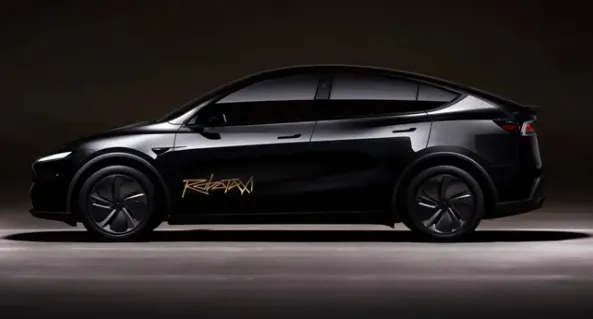The transportation industry is experiencing its most significant disruption since the advent of ride-hailing apps. Tesla’s recent launch of its Robotaxi fleet in Austin, Texas, isn’t just another tech experiment — it’s a seismic shift that could reshape how we think about mobility, particularly threatening established players like Uber while creating both challenges and opportunities for traditional airport limo service providers and chauffeur service companies.
The Robotaxi Reality Check
Tesla’s Austin launch represents more than just another autonomous vehicle test. Early users are reporting experiences that dramatically outperform traditional ride-hailing services. Industry experts like Bindu Reddy, CEO of AbacusAI, noted that Tesla’s Robotaxis are both faster and cheaper than existing alternatives, stating: “If Tesla RoboTaxi beats Waymo and Uber on price and speed, it will become the world’s most valuable company!”
The numbers speak volumes. At just $4.20 per ride, Tesla’s service undercuts traditional ride-hailing while offering near-instantaneous pickup times. Users report no waiting for driver approval, no hunting for parking spaces, and seamless door-to-door service that’s “indistinguishable from those of a good human driver.”

Watch Tesla’s Robotaxi service in action during the Austin launch
Why Uber Should Be Worried
Tesla’s strategy poses a fundamental threat to Uber’s business model. Unlike Waymo, which partners with Uber’s platform, Tesla is building its own ecosystem. This vertical integration means Tesla keeps 100% of the revenue while controlling the entire customer experience — from the app interface to vehicle maintenance.
The competitive advantages are stark:
- Speed: Instant ride approval versus waiting for driver acceptance
- Cost: Lower operational costs without human drivers
- Consistency: Standardized service quality across all rides
- Availability: 24/7 operation without driver fatigue or shift changes
The Airport Limo Service Industry’s Crossroads
For luxury transportation companies specializing in airport transfers and chauffeur service, Tesla’s Robotaxi revolution presents both an existential threat and unprecedented opportunity. Traditional airport limo service providers must evolve or risk becoming obsolete. Here’s how forward-thinking companies can not only survive but thrive in this new landscape.
1. Embrace the Premium Experience Advantage
While robotaxis excel at basic transportation, airport limo service and chauffeur service companies still hold the high ground in luxury experiences. Focus on what autonomous vehicles can’t replicate:
- Professional chauffeur service: Trained drivers who provide personalized assistance with luggage, door service, and local knowledge
- Premium airport transfers: Meet-and-greet services, flight monitoring, and seamless terminal pickup experiences
- Special occasions: Weddings, proms, corporate events where human touch and ceremony matter
- Business luxury: Executive transportation with privacy partitions, mobile offices, and premium refreshments
- Group airport transfers: Larger vehicles for corporate travel, family vacations, and event transportation
2. Integrate Autonomous Technology Strategically
Rather than fighting the tide, smart airport limo service companies should consider how to incorporate autonomous technology:
- Hybrid fleets: Combine autonomous vehicles for standard rides with premium chauffeur service for airport transfers and special occasions
- Cost reduction: Use autonomous vehicles for repositioning empty cars, reducing operational costs for airport limo service operations
- Extended service hours: Offer 24/7 availability for basic luxury transportation while reserving professional chauffeur service for premium airport transfers
3. Pivot to Experience and Event Management
Transform from pure transportation providers to comprehensive experience managers:
- Premium airport transfers: Full-service travel coordination including flight monitoring, customs assistance, and seamless connections
- Corporate chauffeur service: Executive transportation with professional drivers trained in discretion and business protocols
- Event coordination: Wedding transportation, corporate shuttles, and special event logistics
- Tourism packages: Curated city tours, wine country experiences, and scenic route services with knowledgeable chauffeurs
4. Leverage Data and Technology
Invest in technology that enhances rather than replaces human service:
- Predictive scheduling: Use AI to optimize routes and predict demand patterns
- Customer relationship management: Build detailed profiles to personalize service
- Real-time communication: Keep clients informed with sophisticated tracking and communication systems
5. Build Strategic Partnerships
Consider partnerships that leverage autonomous technology while maintaining premium positioning:
- Airport partnerships: Exclusive arrangements for premium airport transfers and meet-and-greet services
- Hotel partnerships: Preferred chauffeur service provider status for guest transportation
- Corporate contracts: Long-term agreements for executive airport transfers and chauffeur service
- Travel agency partnerships: Integrated airport limo service offerings for luxury travel packages
The Road Ahead
The transportation industry is entering uncharted territory. Tesla’s success in Austin suggests that widespread robotaxi deployment is not a matter of if, but when. While regulatory challenges remain — as evidenced by NHTSA’s safety inquiry — the momentum toward autonomous transportation appears unstoppable.
For airport limo service and chauffeur service companies, the key to survival lies in differentiation and adaptation. Those who cling to traditional models risk being swept away by the efficiency and cost-effectiveness of autonomous fleets. However, companies that recognize their unique value proposition in luxury airport transfers, personalized chauffeur service, and special occasion transportation can carve out sustainable niches in the evolving market.
The future belongs to transportation companies that understand one fundamental truth: while robots can drive cars, they cannot provide the professional chauffeur service experience, handle complex airport transfers with flight delays and customs requirements, or deliver the human connection that defines true luxury transportation.
Taking Action Now
The window for adaptation is narrowing. Successful airport limo service and chauffeur service companies should begin their transformation immediately:
- Assess your current service portfolio and identify which airport transfers and chauffeur services are most vulnerable to automation
- Invest in professional chauffeur training focusing on premium service delivery and customer experience
- Develop strategic partnerships with airports, hotels, and corporate travel managers
- Explore technology integration opportunities that complement rather than replace professional chauffeur service
- Build a premium brand that emphasizes luxury airport transfers, reliability, and personalized chauffeur service
The robotaxi revolution is here. The question isn’t whether it will disrupt the transportation industry — it’s whether your airport limo service or chauffeur service company will adapt quickly enough to thrive in the new landscape. The choice is yours: evolve or become a footnote in transportation history.




.avif)
